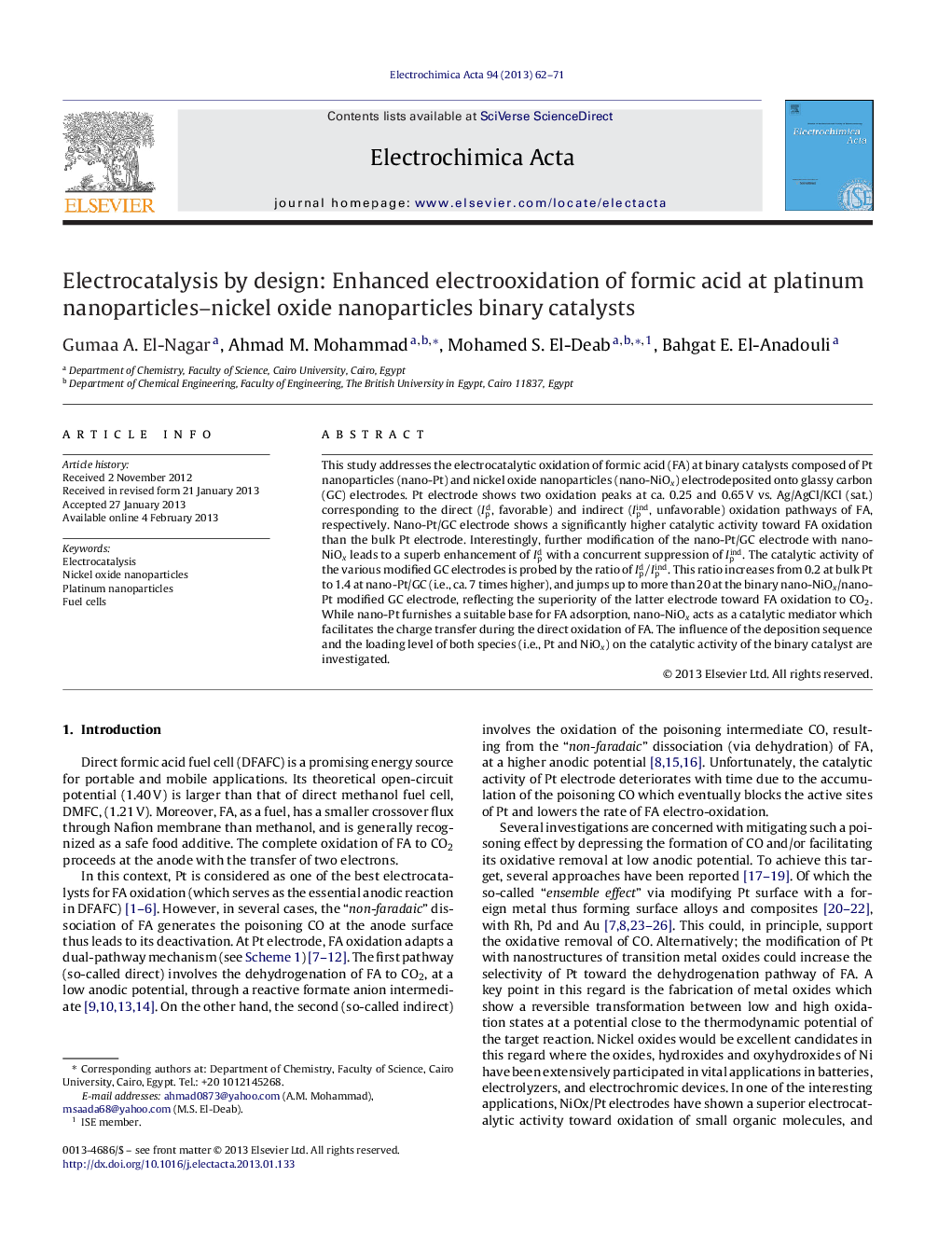| Article ID | Journal | Published Year | Pages | File Type |
|---|---|---|---|---|
| 187031 | Electrochimica Acta | 2013 | 10 Pages |
This study addresses the electrocatalytic oxidation of formic acid (FA) at binary catalysts composed of Pt nanoparticles (nano-Pt) and nickel oxide nanoparticles (nano-NiOx) electrodeposited onto glassy carbon (GC) electrodes. Pt electrode shows two oxidation peaks at ca. 0.25 and 0.65 V vs. Ag/AgCl/KCl (sat.) corresponding to the direct (Ipd, favorable) and indirect (Ipind, unfavorable) oxidation pathways of FA, respectively. Nano-Pt/GC electrode shows a significantly higher catalytic activity toward FA oxidation than the bulk Pt electrode. Interestingly, further modification of the nano-Pt/GC electrode with nano-NiOx leads to a superb enhancement of Ipd with a concurrent suppression of Ipind. The catalytic activity of the various modified GC electrodes is probed by the ratio of Ipd/Ipind. This ratio increases from 0.2 at bulk Pt to 1.4 at nano-Pt/GC (i.e., ca. 7 times higher), and jumps up to more than 20 at the binary nano-NiOx/nano-Pt modified GC electrode, reflecting the superiority of the latter electrode toward FA oxidation to CO2. While nano-Pt furnishes a suitable base for FA adsorption, nano-NiOx acts as a catalytic mediator which facilitates the charge transfer during the direct oxidation of FA. The influence of the deposition sequence and the loading level of both species (i.e., Pt and NiOx) on the catalytic activity of the binary catalyst are investigated.
► Pt and Ni oxide nanoparticles-based binary catalyst is developed for formic acid (FA) oxidation. ► A superb enhancement of the direct electro-oxidation pathway of FA is achieved by a proper design of the binary catalyst. ► β-NiOOH phase is believed to mediate the direct oxidation of FA and/or the oxidation of the poisoning CO–CO2 at low overpotential.
